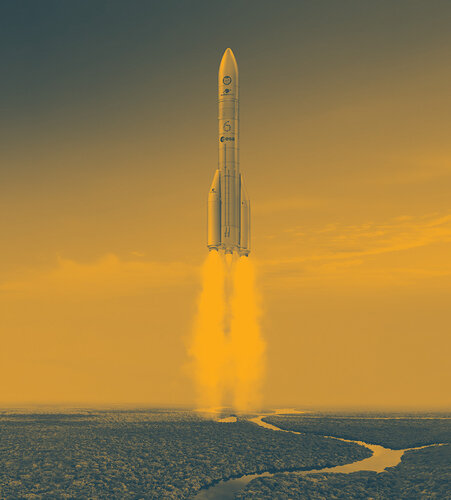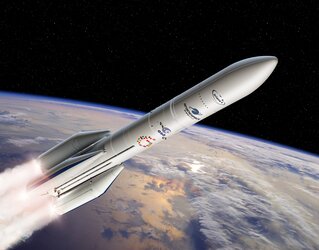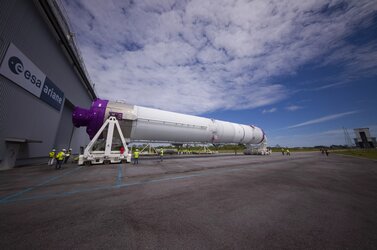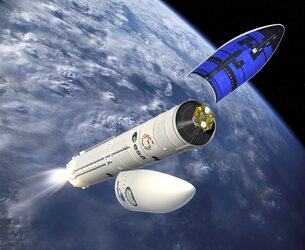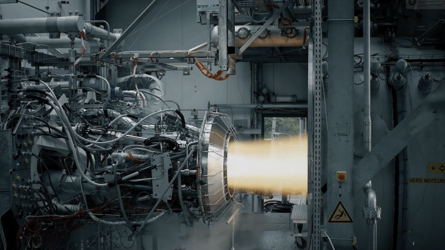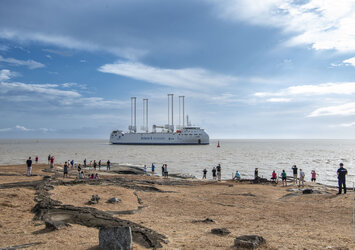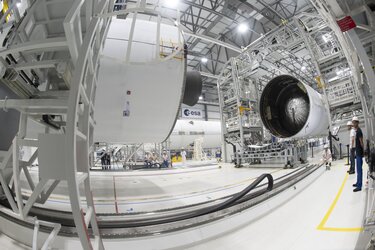Ariane 6: designed with sustainability in mind
In brief
As the number of missions launched to space grows rapidly year by year, there is growing interest in ensuring the long-term sustainability of human space activities – which includes minimising their impact on the Earth and space environment. Ariane 6, Europe’s newest rocket, has been designed with sustainability in mind from the outset, starting from its initial development and continuing throughout its lifetime.
In-depth
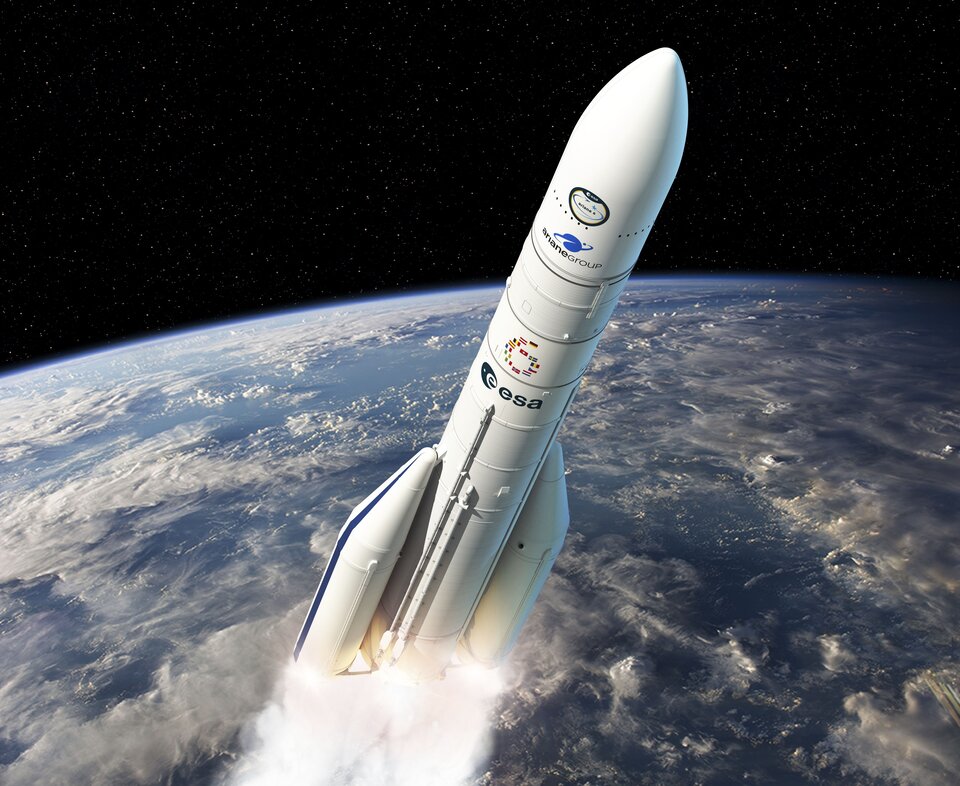
Several measures have been taken to minimise the environmental impact of Ariane 6 during its development and production – coordinated with ESA's Clean Space Office – but also throughout its operation over the years to come.
Ariane 6 has undergone a full environmental impact assessment, aiming to minimise carbon emissions during the development, manufacturing and transport of its elements to Europe’s Spaceport in Kourou. Work is ongoing on the sustainable production of its rocket fuel and measures are being taken to ensure that the operational use of Ariane 6 will be in line with the latest space debris mitigation guidelines and other guidelines for the responsible use and long-term sustainability of outer space:
Environmental impact analysis

With ESA's Clean Space Office, an initial ‘Life Cycle Assessment’ was conducted for the Ariane 6 programme. Its purpose was to identify opportunities for improvements in both products and processes to further reduce environmental impacts. Various potential impacts were assessed, from the emission of greenhouse gases to the pollution of soil and acidification of water. Every stage of the Ariane 6 programme and its life cycle were assessed but can only be confirmed once the rocket flies.
A detailed assessment of carbon dioxide impacts was also performed, with reduction measures now being implemented across all phases of Ariane 6's production in Europe and its transport to Kourou. This includes replacing toxic materials, reducing energy consumption at the ground segment and recovering helium, hydrogen and other waste reduction measures.
Cleaner sailing

The different elements of Ariane 6 are built in various countries across Europe and transported to Europe’s Spaceport in French Guiana via the partially wind-powered ‘Canopée’ – the first cargo ship built with such hybrid propulsion.
The ship is the first custom-built transporter to use sails, reducing emissions and saving on fuel by up to 30%. The feasibility of a ship powered by hydrogen is also being investigated.
A circular, more sustainable ground segment

The Ariane 6 launch pad was built to lessen the site's carbon footprint and preserve local natural resources. The location was chosen to avoid interfering with protected species.
The ‘IMPROVE!’ sensor development campaign is currently deploying sensors all around the Ariane 6 ground segment, from the launch complex to test benches and the production of elements, to measure real-time carbon dioxide emissions and other parameters, as well as continuously monitoring energy consumption. Further cost and carbon footprint reductions have already been identified from the data and will be proposed for ESA's next Ministerial Council.
The ReUSE! Initiative ensures the maximum possible reuse of ESA materials, assets and buildings. By adapting and reusing existing infrastructure, the operational and commercial performance of ESA's built assets can be enhanced, while reducing environmental impacts as well as production costs and the overall ‘time to market’.
Conserving valuable water resources


Access the video
Tonnes of water are pumped out from the Ariane 6 water deluge system during a launch, to help suppress the noise of the rocket and booster engines as they roar to space. This water is carefully recuperated during every launch and stored for the next.
Spraying huge volumes of water on the launch pad protects both the launch vehicle and its payloads by absorbing and deflecting the tremendous acoustic energy generated at liftoff. Shockwaves created as engine exhaust gases exceed the speed of sound and collide with ambient air cause noise levels to reach 180 decibels.
Sustainably produced rocket fuel

Ariane 6 uses liquid hydrogen and liquid oxygen as fuel for its main and upper stages. Hydrogen in its gaseous form is rarely found on Earth, and so is currently produced in French Guiana from steam reforming of methanol – a process that emits greenhouse gases as a side-product.
Other techniques are however far more sustainable, so ESA and France’s space agency CNES have launched the HYGUANE (HYdrogène GUyanais A Neutralité Environnementale) project to enable the production of hydrogen fuel using the solar-powered electrolysis of water, which reduces the amount of carbon dioxide emitted by a factor of five.
Responsible use of outer space

Thanks to its reignitable Vinci engine and careful mission planning, the Ariane 6 upper stage can be stopped and restarted repeatedly. A final burn can deorbit the stage to burn up in Earth's atmosphere, or reorbit it into a graveyard orbit, out of the way of potential collision with operational satellites or space debris.
This ensures Ariane 6 adheres to the Zero Debris approach – ESA's bold goal to significantly limit the production of debris in Earth and Lunar orbits by 2030 for all future missions, programmes and activities.
Research continues

ESA continues to research the impact of rocket launches on our environment in Earth and space, while developing new technologies and standards to ensure space transportation lives up to the ideals of the missions it launches: to peacefully explore and use space for the benefit of Earth and all its inhabitants in a sustainable manner and with future generations in mind.
From the development of a green, reusable, high-thrust liquid propulsion engine – Prometheus, to the Agency’s big demonstrator technology for reusable liquid boosters – Themis, Europe’s next rocket is expected to be reusable.
ESA and its partners are serious about ensuring the long-term sustainability of outer space activities, and the measures taken by the Ariane 6 programme are contributing to this goal.

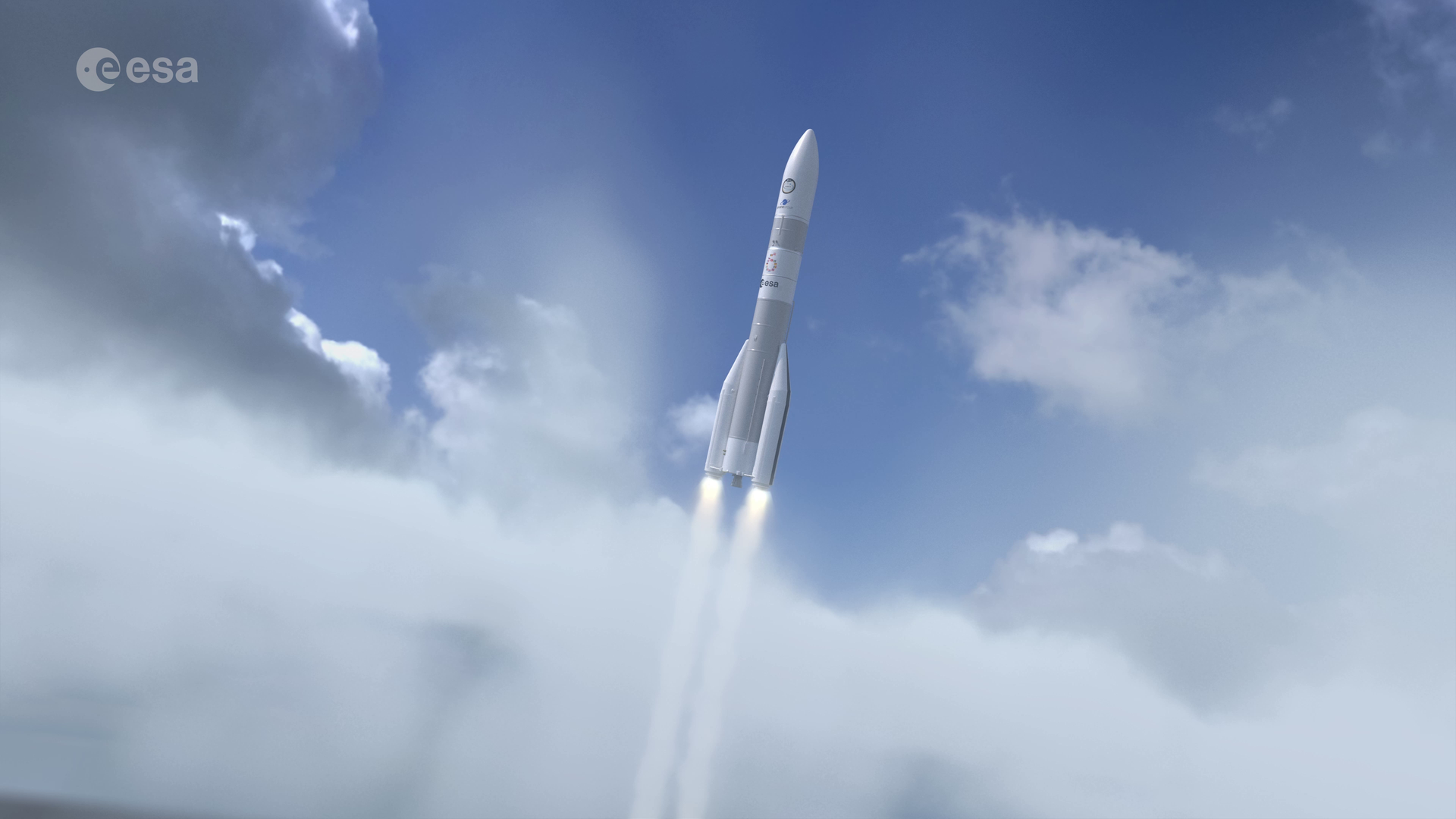
Access the video














 Germany
Germany
 Austria
Austria
 Belgium
Belgium
 Denmark
Denmark
 Spain
Spain
 Estonia
Estonia
 Finland
Finland
 France
France
 Greece
Greece
 Hungary
Hungary
 Ireland
Ireland
 Italy
Italy
 Luxembourg
Luxembourg
 Norway
Norway
 The Netherlands
The Netherlands
 Poland
Poland
 Portugal
Portugal
 Czechia
Czechia
 Romania
Romania
 United Kingdom
United Kingdom
 Slovenia
Slovenia
 Sweden
Sweden
 Switzerland
Switzerland



























